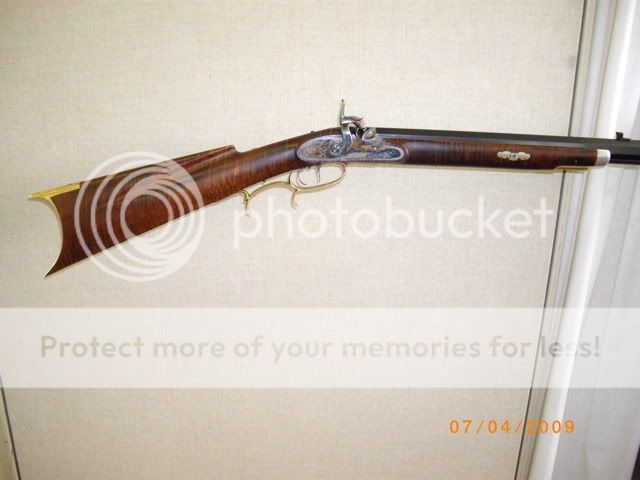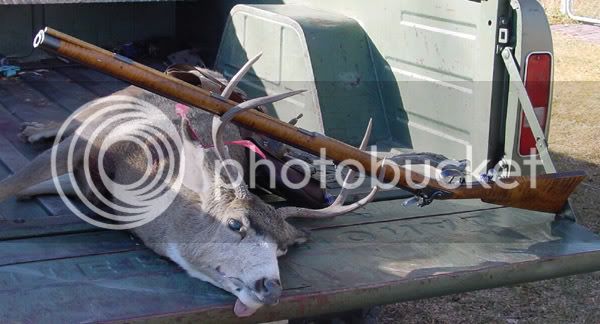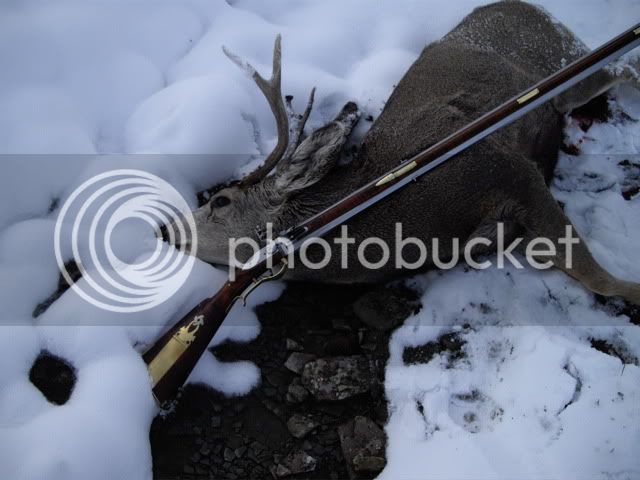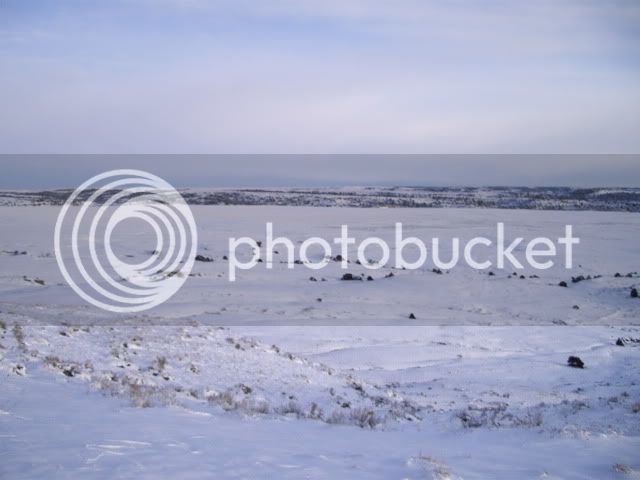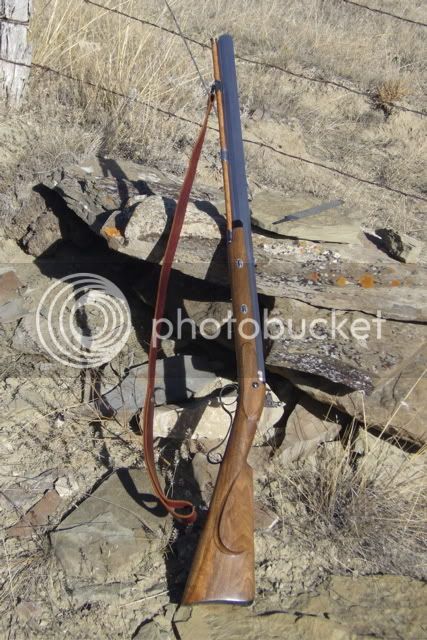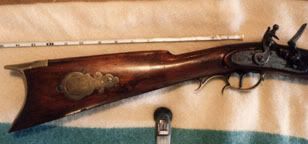Headhunter said:
Dan,
That is a great point you made there Dan. Rifle weight, barrel size and buttplate width and shape play a KEY factor for an enjoyable rifle.
A 7 pound 58 would probably kill a normal man with a 100 grain charge, or at least rip his face off.
Where as a .36 Hawken 1" would be a LUG to carry around. I have a buddy that has a 1" .36 Hawken and it wears him out squirrel huntin!!!
Headhunter
My 38" 1" x 54 caliber weighs about 10 pounds.
The 16 bore is about the same. The swivel breech is heavier but don't know how much.
I carried it about 4 miles the day I killed this deer, including 1/2 mile drag in about a foot of snow over fairly rough terrain and I am approaching what many would think of as geezerhood, am out of shape and weigh 30 pounds more than I did 40 years ago

People that complain about a 10 pound gun being too heavy need to get out and walk more during the summer. An hours fast walk 3-5 times a week will make a vast difference.
A light gun is impossible to shoot accurately offhand if your heart rate and breathing are up much.
Our forefathers were smaller than we are in general and carried heavier guns as a matter of course. Some buffalo hunters used to carry TWO heavy rifles, 14-16 pounds, 100 rounds or more of heavy ammo and a some water when hunting buffalo. Yeah on foot.
So when someone gets worn out with a 10 pound+- rifle I think that someone is a LONG way from being in any kind of shape.
It is possible to make rifles in large calibers that are user friendly. But not with Amercian stock designs much after 1780-90. The British sporting rifle of the same period could be made 8-9 pounds in a 69 caliber (14 bore) and shoot a ball over 1 ounce in weight at 1600 and still be tolerable.
The rifle shoots a one ounce ball at about 1600 fps and will not injure the shooter unless shot a lot from the bench.
But the typical Hawken buttstock/buttplate would be miserable on the same rifle. These are really only good for about 54 caliber.
The "squirrel rifle" stocks, the Leman etc are pretty miserable much over 45 caliber. A good friend had a Leman in 50 IIRC years ago that was miserable to shoot even with a 1" barrel.
This rifle is a Leman, actually a Leman stamped lock dated 1840 and marked on the barrel "Connestoga Rifle Works". This was Leman's "low quality line and is 54 caliber. Barrel is just under 1" and is about 39" long.
Its a "squirrel rifle" buttstock.
The early longrifle with the heavy buttstock something like the Schriet rifle will handle recoil well. But this basic stock design was dead by the 1780s with most makers.
Dan





